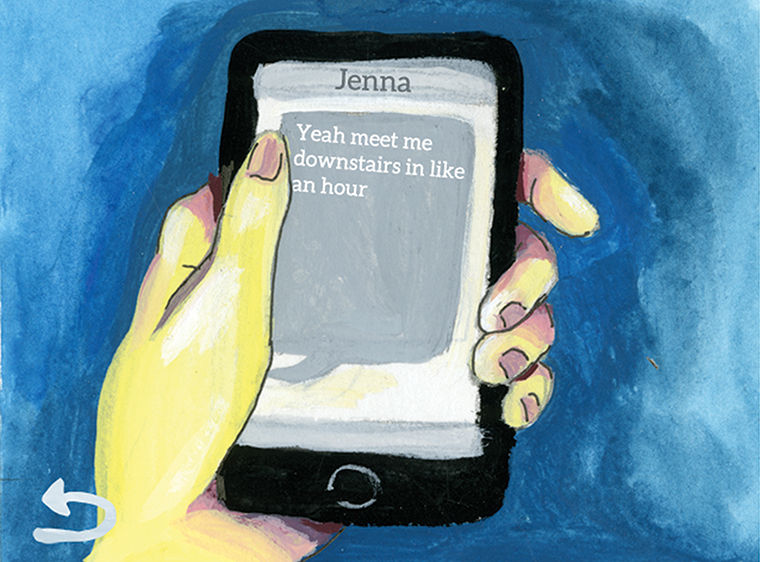Game gives insight to haunting ‘Freshman Year’ experiences
Nina Freeman’s “Freshman Year” game evokes feelings of loneliness and discomfort often felt during a student’s freshman year of college in this horrifying new game.
April 13, 2015
Horror is the only genre that truly applies to “Freshman Year,” the latest of Nina Freeman’s vignette games. Freeman is a game designer prominent in the indie gaming scene who recently gained widespread recognition for her game “How Do You Do It?”
Unlike most other horror games, this one tells a true story, and the only villain in it is a human being. Like all of Freeman’s games, “Freshman Year” captures a scene and explores it through simple but meaningful gameplay. Be cautious, though. The game contains depictions of abuse.
Freeman is a game designer for the Fullbright Company, the creators of the hit indie video game “Gone Home.” Before working for Fullbright, she worked as a web developer for Kickstarter while creating small vignette games in her spare time. These vignette games capture scenes from Freeman’s life and convey her feelings at the time through clever use of game mechanics, visuals and music. Fortunately, Freeman continues to create similar types of video games using these techniques despite also being a full-time game developer in the industry.
The aptly named “Freshman Year” tells a story from Freeman’s first year of college. Lying in bed, she receives a text from her friend who invites her out to a bar. After a brief exchange of text messages in which the player can choose from a few responses, Freeman agrees to meet her friend downstairs. After they meet up, her friend runs off to buy weed and then stops responding to Freeman’s texts. She heads to the bar to wait for her friend, briefly speaks to the bouncer and heads inside.
Feeling awkward and alone and trying to avoid drinking too much, Freeman leaves the bar and heads outside, where she continues to text her friend, practically begging her to show up. The bouncer asks if her friend has shown up yet, invading her personal space. Before she can respond, he begins groping her and kissing her neck. After far too long, her friend finally shows up and pulls Freeman away to safety. The game ends with her friend shrugging off what happened, and Freeman is left sitting at the bar, not wanting to leave because her friend had just arrived.
Throughout the depiction of the abuse, the background music cuts out, replaced with a tense track akin to a frantically beating heart. While the disgusting nature of the scene and the sudden shift in the art are enough to throw anyone off, the sound drives the incredibly powerful scene, making it feel tense and uncomfortable. Even someone who has never experienced any sort of abuse can recognize how traumatic the situation is.
The feeling of loneliness and general discomfort that the video game evokes out is exacerbated by this scene, and the feeling afterward is much worse. Freeman’s friend seems to simply not care about the assault, and the player is left staring into a mirror watching her proceed to have fun while Freeman sits alone at the bar, afraid and completely silent.
Throughout the game, Freeman has once again captured a moment in her life and turned it into a beautiful and honest piece of art. She is a true artist, expressing herself in the way she knows best and creating games that engender empathy like no others.
The game depicts events that Freeman experienced, but it should not be seen as a channel for understanding abuse. It is simply one story among many, and the empathy it garners should be taken as a cue for those looking to help others deal with similar experiences. “Freshman Year” and all of Freeman’s vignette games can be played for free at www.NinaSays.so/.








